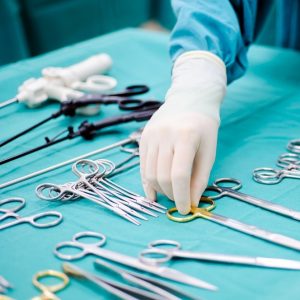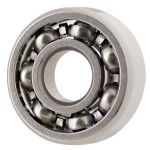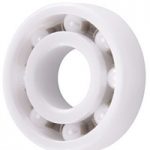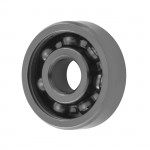
Medical Grade Bearings – As technology continues to advance, new applications create challenging new environments for designers and engineers to overcome. Among those various applications are Medical and Surgical Applications & they can create a challenging environment for bearings to survive in. Medical and Surgical devices are typically required to be sterilized using highly effective methods and chemicals that can damage bearing materials over time. One of the challenges associated with this environment is corrosion and eventual breakdown or degradation that severely impairs bearing function and rolling. Fortunately there are solutions to these extreme environments and APT Bearings, Inc. can help you with determining the right solution – Medical Grade Bearings.
The following product options have certain specific characteristics that make them suitable candidates for Medical Grade Bearings, however, every application is unique so it would be good to contact a Bearing Product Specialist to assist in your design process.
Existing Solutions:
440 + Passivation surface treatment – 440 has long been used for medical and surgical application for its good corrosion resistant properties. As an added performance booster (against corrosion) Passivation has also been widely used on various steels to neutralize surface impurities thereby increasing the corrosion resitance of the part. 440 Bearings + Passivation offers increased corrosion resistance & for some applications this level of corrosion resistance may be enough to get the job done. This solution is the most readily available which facilitates product development efforts best.
Alternate Materials:
Ceramics – Full Ceramic Bearings are about as corrosion proof as you can get for medical applications. Full Ceramic bearings can be utilized to overcome corrosion typically associated with medical sterilization processes, however the cost of Full Ceramic Bearings are significantly higher than typical stainless steel. This cost delta may limit the feasibility of using Full Ceramics. Another factor is that full ceramic bearings will typically NOT hold up to high loads like their metallic counterparts can. Lower load applications would be a better fit.
High Nitrogen Steel – A new grade of steel is becoming more popular for corrosion prone applications & extreme medical applications may be a good fit for High Nitrogen Steel. The chemical composition of the steel introduces Nitrogen which adds to the corrosion resistance and can be 2x~4x more corrosion resistant than typical “stainless steel” 440C. The drawbacks to this material is its availability in the marketplace. Other materials are more readily available for samples and prototypes, so obtaining a small quantity of parts in the exact size you want may require a large manufacturing run. Another drawback is that the cost is higher – about twice as much per unit. The load carrying capacity is similar to that of conventional bearing steel.
300 series Stainless Steel – 300 series stainless steel has long been used in the medical industry as a go-to material largely in part to its superior corrosion resistance over other steels. Combined with a standard passivation cycle, Medical Grade Bearings made from 300 series stainless steel should add additional cycles to the life of your device – from a corrosion resistance perspective. 300 series steels have a major drawback, they are significantly softer materials and cannot be hardened via conventional methods so the load carrying capacity is reduced significantly – approx. 30% of the carrying capacity of standard bearings.
Advanced coatings:
DLC (Diamond Like Coating) – DLC is widely used in various fields and applications to extend life on wear surfaces such as molds, transmissions, and gears. DLC is a very thin layer of diamond structure that is bonded to the surface of the bearing rings (or whatever piece is being treated.) The surface coefficient of friction is reduced as a primary result, however, as a byproduct the workpiece surface is made more corrosion resistant as well. (Diamond won’t corrode.) It acts like a coat of paint would on automobiles. And just like the paint on automobiles at some point it will wear off and the substrate will be exposed to the environment when the normal substrate properties will take over. DLC is already in use in medical as well as other industries.






